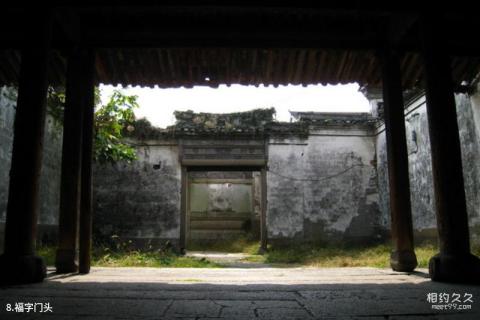
Introducción a la puerta con la palabra "福": La casa era originalmente parte de la antigua residencia de Feng Shuji, el principal funcionario durante el período Jiajing de la dinastía Ming. Más tarde, debido al declive de la dinastía Ming. descendientes de la familia Feng, se vendió a la familia Ying y el patio fue reconstruido. En el lado este de la puerta, hay una puerta mosquitera de brocado colgante. La segunda puerta es de estilo Paike; La puerta está en el extremo sur y hay un ladrillo con la palabra "福" grabada, por eso se llama "la puerta con la palabra "福". El vestíbulo frontal tiene cinco tramos, con un ancho de 18,8 metros y una altura de 9,9 metros. La sala abierta es del tipo viga elevable, con columnas Shu apoyadas sobre las vigas planas. los capiteles de las columnas frontales están decorados con cruces, la columna del alero frontal es una pequeña octogonal y la columna inferior es una cintura cuadrada a lo largo de la base de la columna. Las columnas restantes tienen forma de cuentas planas, con estigmas enrollados y se utilizan juncos. en los huecos entre las vigas. El corazón está hecho de cáscaras de arroz mezcladas con barro y enlucido, con un techo duro a dos aguas. Se construye un muro en forma de ocho junto a las dos columnas del alero en la parte trasera de la sala abierta. Está hecho de soportes hechos de ladrillos y hay una puerta de brocado con marco principal en el medio de la pared trasera. En el lado norte, hay una inscripción en el dintel con la inscripción "Yichou Dongyue" en el medio y la inscripción "Zeliu Sishun" en el medio y la inscripción "Chen Mingbao" en la frente.
El edificio trasero es un "patio de tres lados" con habitaciones en el ala izquierda y derecha, todos los cuales son edificios. Se ha demostrado mediante la enseñanza que el vestíbulo frontal tiene las características y el estilo de Ming. La arquitectura de la dinastía y el edificio trasero tienen el estilo de principios de la dinastía Qing. La preservación aún está completa.
